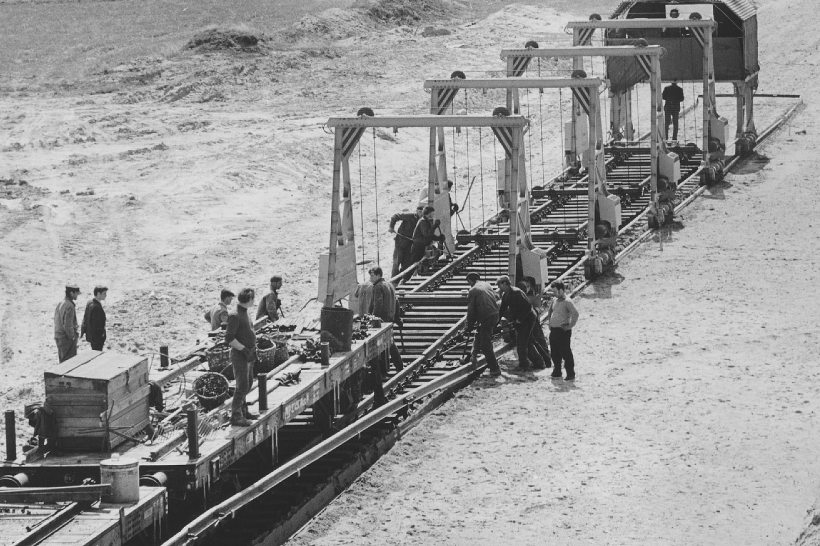
The construction of the Central Mainline - 1971-1974
History of railways
18 grudnia 2020

The construction of the Central Mainline - 1971-1974
Dismantled by the Red Army
The Red Army entered Poland, crossing its pre-1939 border, on a freezing cold night of 3/4 January 1944 near Rokitno, east of Sarny. In six months, the frontline reached the Vistula where it stopped for more than five months. The Russian offensive in January 1945 saved the railway network in Upper Silesia and part of the lines in Lower Silesia from destruction. The army was followed by “trophy brigades” coordinated by the Red Army Wartime Trophy Board, which dismantled and carried away elements of infrastructure, steel structures and rolling stock, at the same time devastating the buildings. This was a common practice, in particular in areas which under the Treaty of Yalta were to be incorporated into the Polish state, that is, lands in the north-east, the Lubusz Lakeland, West Pomerania, and Lower Silesia.
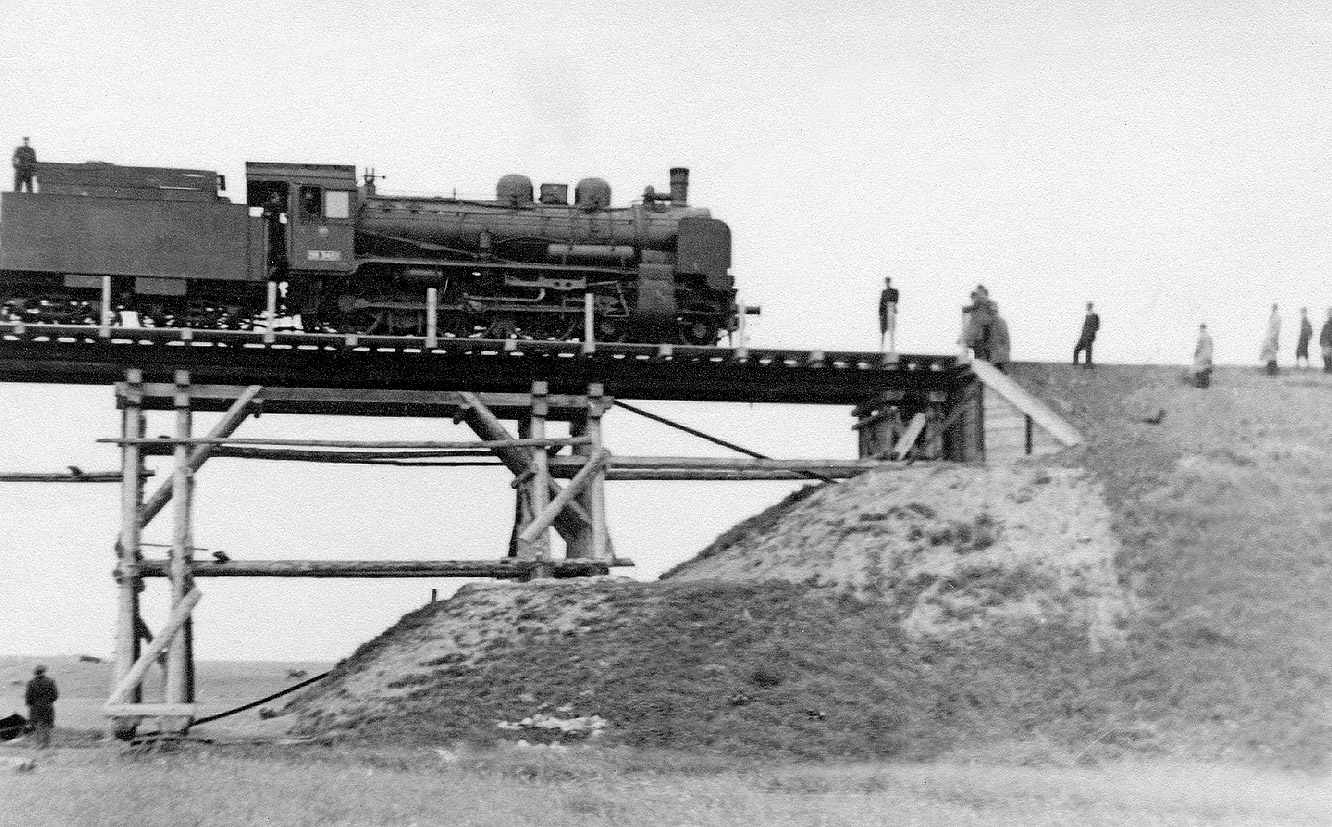
The opening of the Werbkowice-Hrubieszów line - 1946
The Russians dismantled more than 1,554 miles (2,500 km) of normal-gauge lines (932 miles, i.e. 1,500 km were not reconstructed) and 205 miles (330 km) of narrow-gauge lines (124 miles, i.e. 200 km were not reconstructed), and 1,554 miles (2,500 km) of second tracks (mostly in Lower Silesia). Also, nearly the whole traction network on a section of 249 miles (400 km) was stolen in Lower Silesia. In July 1945, in 3 weeks the Russians carried away the rolling stock, dismantled the networks, substation and power station equipment and destroyed part of the poles. Polish State Railways could only remove the remaining cables and use them for the needs of the Warsaw railway junction. Broad-gauge lines in Silesia, leading straight to collieries, facilitated the transportation of coal to the USSR and they remained in operation until 1947. The first train carrying a load of coal to Warsaw departed from Silesia on 7 February 1945.
Launching and reconstruction of railways
PKP took over railway lines from the Soviet Central Military Transportation Management under agreements signed on 11 July (in the Regained Territories) and on 15 August 1945 (the rest of the railway network). The damaged bridges and viaducts on main lines were temporarily reconstructed by Red Army sappers. Similarly, railway lines were restored to operation at a speed of 6–16 miles (10–25 km) a day. Fixed railway bridges, replacing wooden temporary structures, were built up until the early 1960s.
Tracks mending
In summer 1944 in Poland, in the area of Lublin, 208 steam locomotives (including 30 actives ones), 300 passenger carriages (including 100 operable ones) and 2,583 freight wagons (2,000 operable ones) were found. Some lines were left there as normal-gauge lines, among other reasons, due to the transport of crude oil from the mines in the Subcarpathian area. The damaged sections of tracks were repaired by inserting various types of rails stripped from railway station tracks or from second tracks on double-track lines. 12 transfer points from broad- onto normal-gauge wagons were arranged.
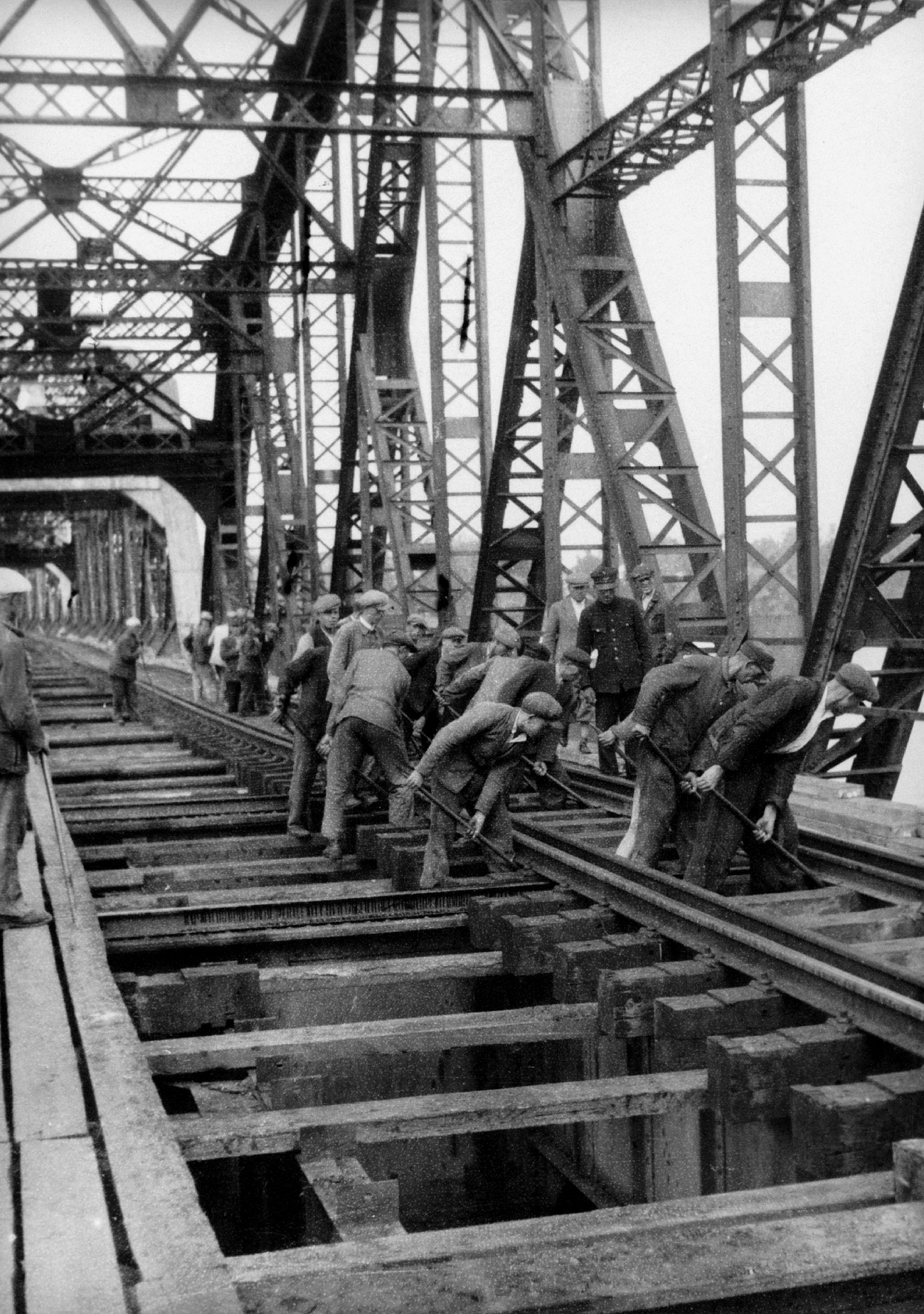
The repair of railway tracks on the bridge in Dęblin - 1946
The foundations of the Ministry of Railways were formed by the Department of Transport, Post Offices and Telegraphs, initially based in Chełm Lubelski. On 1 August 1944 the “Lublin Government” issued a decree calling former railway workers in the territories freed from German occupation to work, and in November the railway was “militarised” and the workers were transferred under the control of military criminal law authorities. Such a state of affairs continued until 1949. The Railroad Guard Service was appointed and new railway directorates were formed in Lublin, Gdańsk, Olsztyn, Wrocław, and Szczecin, and the ones existing before the war in Kraków, Poznań, Warsaw and Katowice were reactivated.
…and people travelling on wagon steps
Passenger transports were put into operation. People were often carried by freight wagons and due to overcrowding – they also travelled on the roofs and steps of the wagons.
Freight trains, apart from supplies for the army, also carried supplies for cities, including: coal, wood, foodstuffs, and kerosene. Interestingly, in Lower Silesia German railway staff worked until 1946.
Reconstruction and first electrification works
In March 1945, within the structures of PKP, the Directorate for the Reconstruction of the Warsaw Railway Junction was established under the management of engineer Stanisław Pietkiewicz. It operated until 31 August 1949. To facilitate military railway traffic through the destroyed Warsaw junction Red Army sappers erected a temporary bridge on the ring rail line passing next to the Citadel. The bridge was opened on 8 February 1945. In July 1945 a temporary main railway station, Warszawa Główna, was put into operation at Towarowa Street. The station was meant for trains arriving in the city from the west. By the end of 1945, 52 pairs of trains departed in different directions.nAt the same time Poland bought 500 “Consolidation” (Tr203) steam locomotives from American demobilisation. In 1947 one hundred heavyweight freight locomotives were brought from the USA to provide rail service on the coal trunk line.
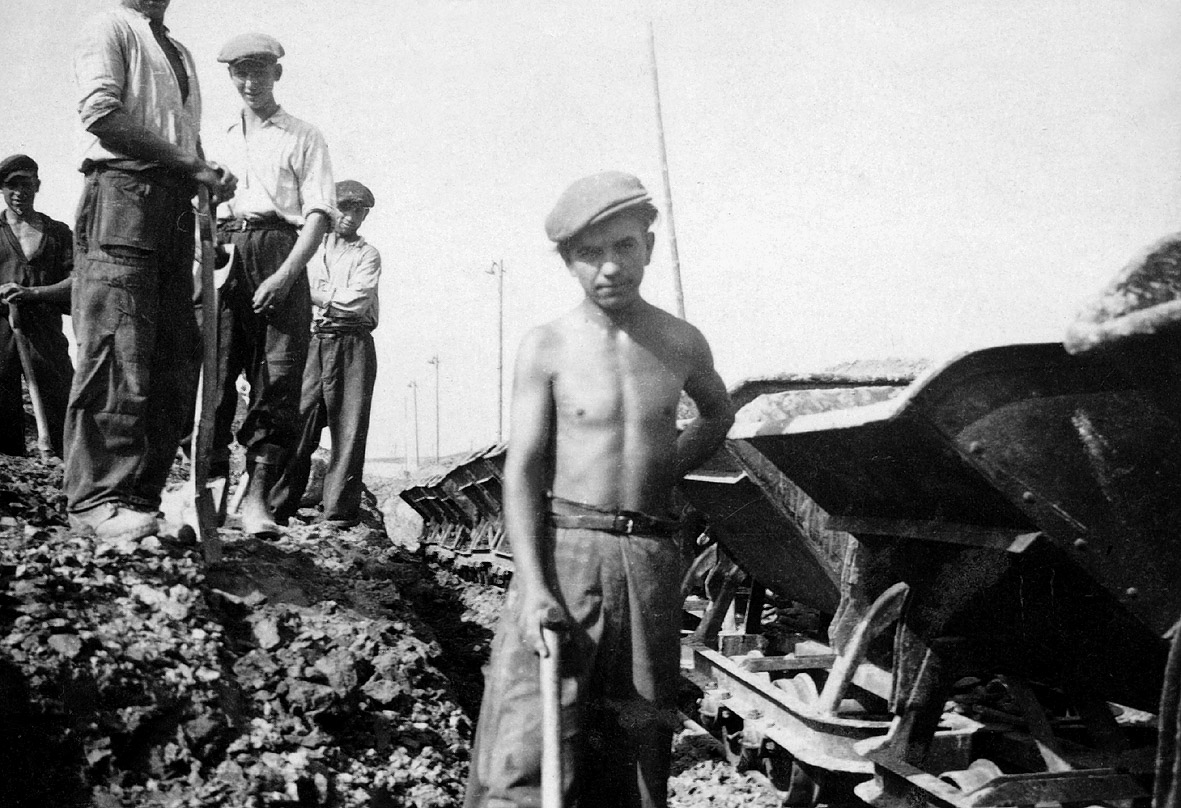
The construction of the Broad Gauge Metallurgy Line - 1979
Electric lines not only in the capital city
Electric Commuter Railways in Warsaw resumed operation as early as 1945, and two years later they were nationalised and incorporated into Polish State Railways. In 1946–1951 the shunting station Warszawa Odolany was built and connected with a new line from Warszawa Gdańska. In December 1948 reconstruction of the (four-track) cross-city line and bridge was completed. Passenger trains started arriving in the temporary station, Warszawa Śródmieście, in June 1949. The destroyed electric traction and rolling stock were repaired thanks to supplies of equipment ordered from a Swedish manufacturer – ASEA. As a result, electric train traffic on the Warszawa Wschodnia–Otwock route was restored on 12 July 1946, on the Warszawa Wschodnia–Miłosna line on 3 February 1949, and to Mińsk Mazowiecki – on 14 March 1949. The pre-war electrification of the junction was restored on 17 January 1950 when electric trains reached Żyrardów. The lines to Tłuszcz and Błonie were put into operation 2 years later.
At the beginning of 1951 electric trains ran from Gdańsk to Nowy Port, and gradually their route was extended to Sopot, Gdynia and Wejherowo. The rolling stock supplied with 800 V current came from the Berlin city railways. In 1951–1954 the Electric Stock Repair Workshop was built in Mińsk Mazowiecki. One year later electric rolling stock was repaired in the Rolling Stock Repair Workshop in Gdańsk. In 1954 the electric train reached Łódź where the first electric locomotive depot outside Warsaw was opened. Thus, electrification went beyond the Warsaw junction. Passenger carriages handled by electric trains became popular in Poland and in 1960 increased up to approx. 14%. Transport needs forced the decision-makers to electrify the connection between Warsaw and Silesia in 1955–1957.
Every year new 100 km
In 1959 electric traction reached Kraków. The speed of electrification was increasing: from 62 miles (100 km) a year in the 1950s, 149 miles (240 km) in the 1960s, to approximately 218 miles (350 km) in the mid-1970s. Polish industry provided subsequent models of locomotives and traction sets but their number was still insufficient. In 1961 thirty universal Škoda EU05 (Bo-Bo) electric locomotives were ordered in Czechoslovakia. For the first time traction motors were completely unsprung. After 15 years of operation, thanks to an alteration in the gear transmission, their maximum speed was increased up to 100 mph (160 km/h). This modification enabled their use on the fastest Polish express trains. The locomotives were parked in Warsaw-Olszynka Grochowska.
Central Mainline
The 139 mile (224 km) long route built in 1971–1977 between Silesia–Zawiercie–Włoszczowa–Idzikowice–Grodzisk Mazowiecki–Warsaw, known as the Central Mainline (Polish acronym:CMK), was the largest investment of Polish State Railways after the war. It provided a new connection between Silesia and the capital city of Poland where trains could travel at up to 155 mph (250 km/h). The expected weight of freight trains was 5 thousand tons. However, due to the lack of proper equipment and in connection with track-level railway transport, the maximum speed was reduced to 100 mph (160 km/h). Travelling at such speed was possible, among other things, thanks to the new design of traction network which was completely compensated, had two catenaries and special suspension. The only stop for passengers on this route is Włoszczowa Północ. From 2006 three express trains stopped there. Currently, it is a stop for most TLK and InterRegio trains.
The plans provided for extending the mainline from Warsaw through Wyszogród, Płock, Sierpc, and Malbork to Gdańsk. Some investments were even commenced but because of the economic crisis in the People’s Republic of Poland the works were suspended. On 11 May 1994 CMK established a new speed record in Central and Eastern Europe. During tests, an Italian Pendolino train reached 155.41 mph (250.1 km/h).
Broad Gauge Metallurgy Line
Another large project completed during the times of the Polish People’s Republic was the construction of a 245 miles (394 km) long broad-gauge, non-electrified line originally referred to as the Hrubieszów–Huta Katowice Line, later Metallurgy and Sulphur Line. At present, it is known as: Broad Gauge Metallurgy Line (Polish acronym: LHS). Built in 1976–1979, it was routed from the railway border crossing in Hrubieszów to the Sławków Południowy railway station in order to enable transport of iron ore from Krzywy Róg directly to the Katowice Steelworks. Sulphur, extracted near Staszów, and coal mined in Silesia were among the goods transported by this line in the opposite direction. At the end of the line and along its route transfer terminals are situated. Currently, they are used for unloading all types of goods imported to Poland from Ukraine and from other countries of the former Soviet Union. In 1990–2000 long-distance passenger trains from Russia and Ukraine travelled irregularly on that route. Platforms for passengers were built at the stations in Hrubieszów and Olkusz and passenger stops in: Zamość Północny, Wola Baranowska and Sędziszów Północny. In 2001 the line was acquired by PKP LHS.
Electricity above all
The electrification of railways progressed quickly. In 1978 the construction of electric traction was completed along with the refurbishment of the Poznań–Szczecin Główny line (133 miles, i.e. 214 km). One year later it reached Goleniów, and in 1980–Świnoujście. Also, the East-West Mainline was electrified: Poznań–Zbąszynek (1979)–Rzepin (1984), Łuków–Biała Podlaska–Terespol (1980)–state border (1981). The speed of works increased up to 311 miles (500 km) a year. Domestic manufacturers were not able to provide sufficient rolling stock supplies, so in the 1970s locomotives had to be imported from Czechoslovakia (ET40; 60 units) and the USSR (ET42; 50 units). In the critical year – 1981 – electric trains departed from Zgierz to Kutno and from Herby through Wieluń to Kępno. In total 4,350 miles (7,000 km) of railway lines were electrified.
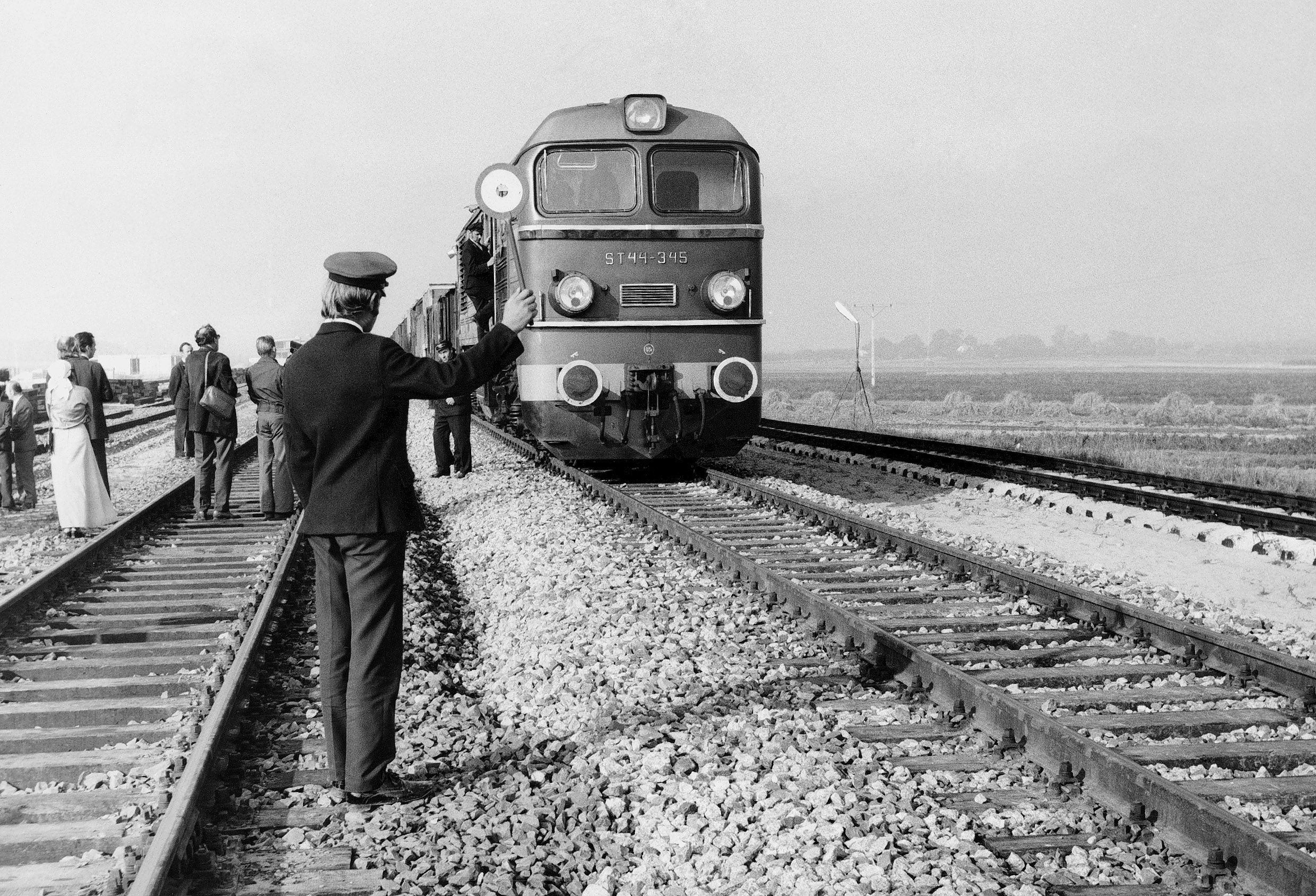
The first train on the Central Mainline - 1974
Other lines subject to electrification were: the Wrocław–Legnica–Miłkowice– –Węgliniec (1985)–Lubań Śląski–Jelenia Góra route (1986) and Warsaw–Białystok–Kuźnica Białostocka (1986). In 1984–1987 electric trains ran from Tarnów through Stróże–Nowy Sącz–Muszyna to the state border with a connection to Krynica. Only in 1988 did electric traction reach Koszalin, Kołobrzeg, Olsztyn, Dęblin, Piła and Szczecinek and one year later–Słupsk and Żywiec. In 1990 electric service was provided on the lines to Przeworsk (Przeworsk–Rozwadów line), Wadowice and Elbląg. At that time Polish State Railways electrified more than 6,214 miles (10,000 km) of lines. In addition, after 1990 the electrified lines Wrocław–Kłodzko–Międzylesie (1994) and Elbląg–Olsztyn (1994) were put into operation. Further electrification was suspended.
The most modern station in Europe
The first competition for a design of a new railway station in Warsaw was announced in 1946, but the winner’s work was not put into effect. The Warsaw Central railway station was built in 1972–1975 according to the design of engineers Arseniusz Romanowicz and Piotr Szymaniak. It was one of the flagship investments in Poland in the 1970s. The new Central Railway Station served most long-distance trains in the Warsaw railway junction. In connection with the planned visit of Leonid Brezhnev to Poland the edifice building was erected frantically. Workers building the station were supported by soldiers of the Polish People’s Army. Fortunately, the construction was completed in December 1975. Considering the socialist standards, the Central Railway Station was very modern and convenient. The state propaganda took advantage of this fact and called the Central Railway Station the “most modern station in Europe”. Old, cramped and impractical railway station buildings were replaced with new ones, in, among other cities, Kielce, Zielona Góra, Katowice, Olsztyn, Częstochowa, Koluszki and Łódź Kaliska. Stations providing rail service to sea ports were developed: Świnoujście Towarowe, Szczecin Port Centralny, Gdynia Port Centralny and Gdańsk Port Północny.
Huge shunting stations
The concept of the freight transport system provided for putting into operation large shunting stations such as: Poznań Franowo, Tarnowskie Góry, Skarżysko-Kamienna, Warszawa Praga, Łódź Olechów, Kraków Prokocim Towarowy, Wrocław Brochów, Szczecin Port Centralny, Inowrocław, Zajączkowo Tczewskie, Lublin Tatary, Piła Główna, Toruń Główny, Białystok, Łazy, Rybnik Towarowy, Gliwice Towarowa, Żurawica Rozrządowa, and Żagań, out of which only the first three have maintained the status of shunting stations. Polish State Railways had the longest lines in 1979–1985:15,131 miles (24,350 km). Railways dominated after the war because motor transport was not competitive. Given a moderately dense railway network and a developed system of sidings to industrial plants and warehouses, bulk cargo was transported by railway. As road infrastructure developed, the share of railways in cargo transport slowly started decreasing from the early 1960s. This trend has continued until now.